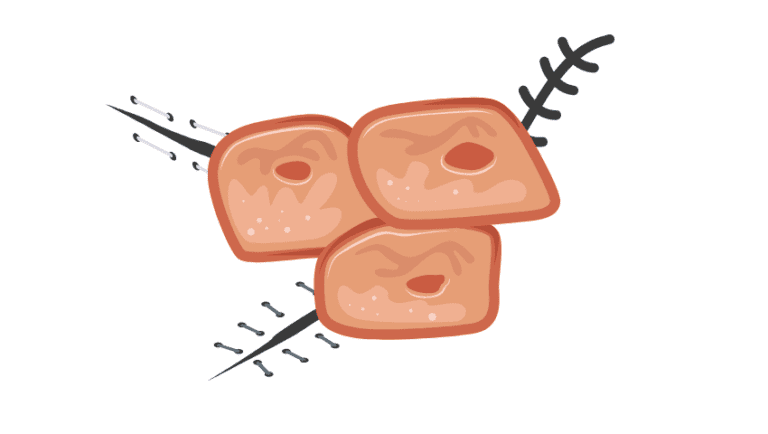Tinea Capitis (Head) .. A Very Simplified Guide 2023
Tinea Capitis is a fungal infection that affects the scalp and hair. It is a common condition worldwide and is most commonly seen in children. The condition is caused by the dermatophyte fungus, which thrives on keratin, a protein found in skin, hair, and nails.
In this article, we will discuss Tinea Capiti in a simple and easy to understand way. We will explore the signs and symptoms of the condition, its causes, and treatment options. By the end of this article, you will have a better understanding of this condition and be better equipped to take steps to prevent and treat it.

About Tinea Capitis
Tinea Capitis is a fungal infection that affects the scalp, causing circular marks and hair loss. It is caused by dermatophyte fungi and can be spread through person-to-person contact, sharing of combs or pillows, and contact with infected pets or farm animals. Symptoms can include partial hair loss, inflammation, and flaking, and may be diagnosed through physical examination and culture tests. Antifungal medications like Terbinafine, Itraconazole, and Fluconazole are commonly used to treat tinea capitis, while topical antifungals are not recommended.
To prevent tinea capitis, good hygiene practices like regular scalp shampooing and cleaning of combs and hairbrushes are important. Sharing of headgear, combs, brushes, and similar items should be avoided. Any infected family members or pets should be examined and treated, and sleeping mats in daycare settings should be disinfected regularly. Overall, tinea capitis is more common in immunocompromised individuals and children, and prevalence in the US is increasing.
Causes of Tinea Capitis
Tinea capitis, commonly known as scalp ringworm, is a fungal infection of the scalp that can also affect the face, eyebrows, or eyelashes. It causes circular marks and hair loss, often with a raised border and a flat center. This condition can be easily spread through person-to-person contact, sharing personal items, and contact with household pets.
Tinea capitis is most common in children under the age of 10 and individuals who are immunocompromised. Its prevalence is increasing in the United States. In this blog post, we will delve into the causes of tinea capitis.
Causes:
- Tinea capitis is caused by a group of fungi called dermatophytes that thrive on dead tissue, especially warm and moist skin.
- There are at least eight different types of dermatophytes that can cause tinea capitis. Trichophyton fungi and Microsporum fungi are the two main species that cause the condition.
- Trichophyton infections are more common in Central America, the United States, and parts of Western Europe whereas. Microsporum infections predominate in South America, Asia-Pacific, Southern and Central Europe, Africa, and the Middle East.
- A minor injury to the scalp can increase your risk of infection.
- Poor general hygiene, sharing personal items such as combs or hats, and contact with household pets are all factors that can increase your risk of developing tinea capitis.
- Individuals with compromised immune systems are more susceptible to tinea capitis.
Prevention:
- Good general hygiene can help prevent all types of tinea infections. Regular scalp shampooing, along with cleaning of combs and hairbrushes is important.
- Headgear, combs, brushes, and similar items should not be shared, and contact should be avoided with infected pets or farm animals.
- Children’s sleeping mats at daycares should be disinfected regularly.
- Household pets with signs of infection should be treated for ringworm even if they do not show any signs of infection.
Those who suspect they have tinea capitis should immediately call their healthcare provider, as home remedies do not effectively treat this condition. Long-term, prescription oral medications are usually needed. Despite its prevalence, tinea capitis can be treated with the right medical intervention and prevention measures.
How is Tinea Capitis Diagnosed?
Tinea capitis, also known as scalp ringworm, is a fungal infection that affects the scalp, face, eyebrows, and eyelashes. It causes circular marks and hair loss, and is most common in children and immunocompromised individuals. Diagnosis of tinea capitis is primarily based on the appearance of the scalp, but there are various tests and procedures that may be used to confirm the diagnosis and determine the type of infecting dermatophyte.
A skin biopsy and culture can be used to identify dermatophytes, but newer molecular techniques such as MLPA and RCA provide faster and more accurate diagnoses. A Wood’s lamp test can help confirm the presence of a fungal infection, but may not be necessary for diagnosis.
Topical antifungal treatments have limited effectiveness and are not recommended, while oral antifungal treatments such as terbinafine, itraconazole, and fluconazole are preferred. Good general hygiene can help prevent tinea infections, and infected pets or animals should be treated to avoid spread of the fungus.
Should i meet a doctor regarding Tinea Capitis?
If you suspect that you have Tinea Capitis, it is essential to see a doctor as soon as possible. Here are some red flags that indicate the need for urgent medical attention:
- Swelling, pus, or discharge from the scalp
- Severe pain, itchiness, or discomfort
- Large areas of hair loss or patchy baldness
- Redness, inflammation, or fever
If you are worried about any of these symptoms, schedule an appointment with your doctor or dermatologist. They will perform a physical exam and may order a biopsy or culture test to confirm the diagnosis. Treatment typically involves oral antifungal medication, which should be taken as prescribed by your doctor. Home remedies and over-the-counter treatments are not effective and could make the infection worse.
Here is a checklist of symptoms that may help determine if you need to see a doctor:
- Circular patches of hair loss or baldness
- Raised border and flat center
- Black dots or broken hairs on the scalp
- Scaling, itching or flaking on the scalp
- Swollen lymph nodes
Remember, prompt diagnosis and treatment are the keys to successfully managing tinea capitis. If you have any concerns about your scalp, schedule an appointment with your healthcare provider as soon as possible.
References
- Tinea Capitis: Symptoms, Causes, Diagnosis, and Treatment
- Tinea Capitis
- Tinea Capitis (Scalp Ringworm)







